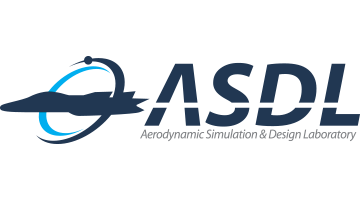Integrated Fluid-Structure-Burning Simulation of a Solid Rocket Motor Interior
Solid propellant rockets produce thrust force by burning a contained propellant grain in a combustion chamber and ejecting high-speed gas through a supersonic nozzle. Because of the nonlinear gas formed during the burning process, complex multiphysical phenomena occur in the interior of the combustion chamber during the transient burning process. Consequently, major factors governing the multiphysics inside the solid rocket are the high-temperature and high-pressure gas flow, the structural deformation of the propellant grain, and the burning process between the gas flow and the propellant. Each module (fluid, structure, and burning) generates a nonlinear feedback cycle by influencing one another. As a result, the interior phenomena in the solid rocket exhibit highly unsteady, multiscale, and multiphysical features. This multiphysical process take place during a very short period after ignition, and most of the abnormal accidents leading to fatal malfunction (for example, crack development, deflagration to detonation transition, etc.) occur at this period. Thus, an in-depth understanding of the multiphysical behavior inside a rocket combustion chamber is extremely important.
Because of physical complexity and strong interactions among multiple disciplines, much of the previous studies in this field have been heavily dependent on experiments, whereas numerical analyses have been conducted to show some limited features of specific physical regions. However, experimental research can be dangerous and expensive, and it is not easy to measure all physical quantities that are necessary to investigate the physical phenomena inside the rocket motor. On the other hand, most of the previous numerical researches have mainly focused on unveiling single-discipline physics, which is usually restrictive in understanding physical phenomena as a whole. The objective of this work is thus to develop an integrated numerical code that can provide the overall tendency of the coupling physics of the combustion chamber interior from the initial burning phase to the final full burning of the contained propellant. At the same time, the integrated numerical code needs to be sufficiently efficient for the purpose of being used in the preliminary design phase of solid rocket motors. From this perspective, an optimal compromise between the reasonable numerical accuracy of each module and computational cost is critical.

To develop the integrated analysis solver, key numerical components are first developed. The arbitrary Lagrangian Eulerian (ALE) kinematical description is adopted for the clear delineation of the dynamic fluid-structure surface. In addition, a robust and efficient automatic remeshing program is developed to handle deformation geometry while maintaining the initial mesh quality. A data transfer scheme along the nonmatching interfaces between the fluid and solid interface is also implemented. Each fluid, structure, and burning module is combined by a staggered time-marching procedure.

(Upper) Ignition process in the forehead of combution chamber
(Lower) Ignition and full burning process of a solid-propellant






